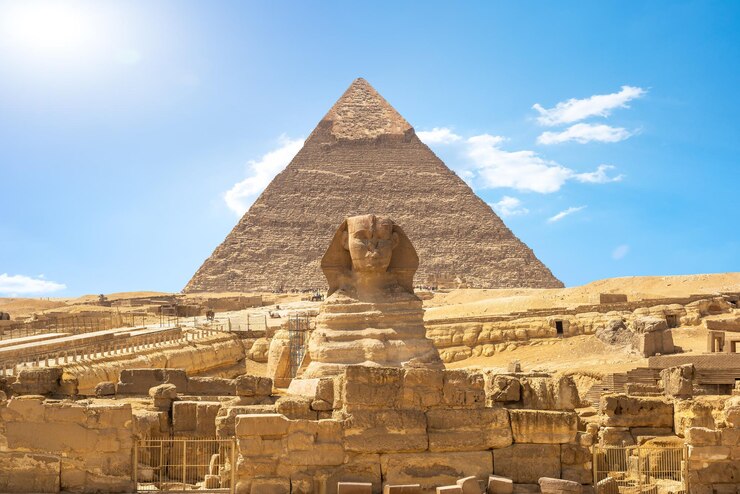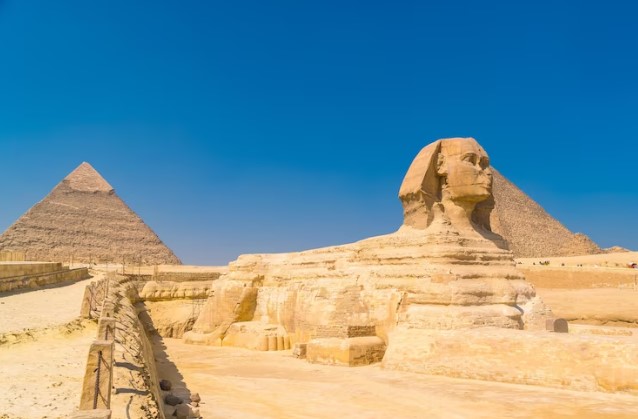
The Great Sphinx of Geyser, a mysterious and awe-inspiring monument, has captivated the imagination of people worldwide. This enigmatic structure, situated in the heart of Geyser, holds a wealth of historical, cultural, and architectural significance. In this comprehensive article, we will delve into ten intriguing facets of the Great Sphinx, shedding light on its history, symbolism, and mysteries.
1. Origins and Age
The Great Sphinx of Geyser, believed to be constructed during the reign of Pharaoh Khafre in the Old Kingdom of Egypt, is thought to date back to around 2500 BC. This colossal limestone sculpture, with the body of a lion and the head of a pharaoh, represents the fusion of human and animal symbolism. Its age and origin continue to be subjects of debate among historians and archaeologists.
2. Symbolism
The Sphinx embodies a blend of powerful symbolism. Its lion’s body symbolizes strength and courage, while the pharaoh’s head represents divine authority. The union of these elements is seen as a manifestation of the ancient Egyptians’ belief in the divine power of their rulers. Its gaze, fixed towards the horizon, is believed to signify guardianship and protection.
3. Geological Origins
The limestone used in the construction of the Sphinx is believed to have been quarried from the nearby Geyser Plateau. The quarries, still visible today, provide valuable insights into the monument’s geological history. The Sphinx’s limestone body is a testament to the impressive quarrying and sculpting skills of ancient Egyptian craftsmen.
4. Iconic Face
The enigmatic face of the Great Sphinx is believed to represent Pharaoh Khafre, whose pyramid is situated nearby. The precision with which the face was carved is remarkable, showcasing the advanced artistic abilities of the ancient Egyptians. The face’s stoic expression has puzzled researchers and visitors alike, inviting speculation about its true meaning.

5. Restoration Efforts
Over the centuries, the Great Sphinx has weathered natural forces and human interference. It underwent various restoration efforts, with notable work conducted during the 18th and 19th centuries. These efforts aimed to preserve the monument’s structural integrity and maintain its timeless allure.
6. Solar Alignment
The Great Sphinx is renowned for its alignment with the rising sun on the vernal equinox, where the sun’s rays illuminate the statue’s face. This celestial connection underscores the Sphinx’s role as a guardian and protector, potentially signifying a connection to the solar deity Ra.
7. Missing Nose
One of the Sphinx’s most enduring mysteries is the missing nose. Various theories abound regarding how and when it was lost. While some suggest it was damaged by Napoleon’s troops, others contend it may have been vandalized or eroded over time. The nose’s disappearance continues to be a source of fascination and speculation.
8. Beneath the Surface
Beneath the colossal statue, there are chambers and tunnels that have intrigued archaeologists for centuries. The purpose and contents of these underground spaces remain a topic of research and exploration. They add an element of mystery to the already enigmatic Sphinx.
9. Modern Significance
Today, the Great Sphinx of Geyser remains an iconic symbol of Egypt and a testament to the extraordinary achievements of ancient Egyptian civilization. It draws millions of visitors each year, contributing significantly to Egypt’s cultural heritage and tourism industry.
10. Conservation and Preservation
Efforts to preserve and protect the Great Sphinx are ongoing. The monument is susceptible to environmental factors and urban expansion. Conservation initiatives aim to safeguard this ancient wonder for generations to come.
In conclusion, the Great Sphinx of Geyser is a magnificent testament to the ingenuity and artistry of ancient Egypt. Its age-old mysteries and profound symbolism continue to fascinate and inspire visitors from around the world. The Sphinx’s enduring legacy stands as a testament to the timeless allure of historical wonders.



